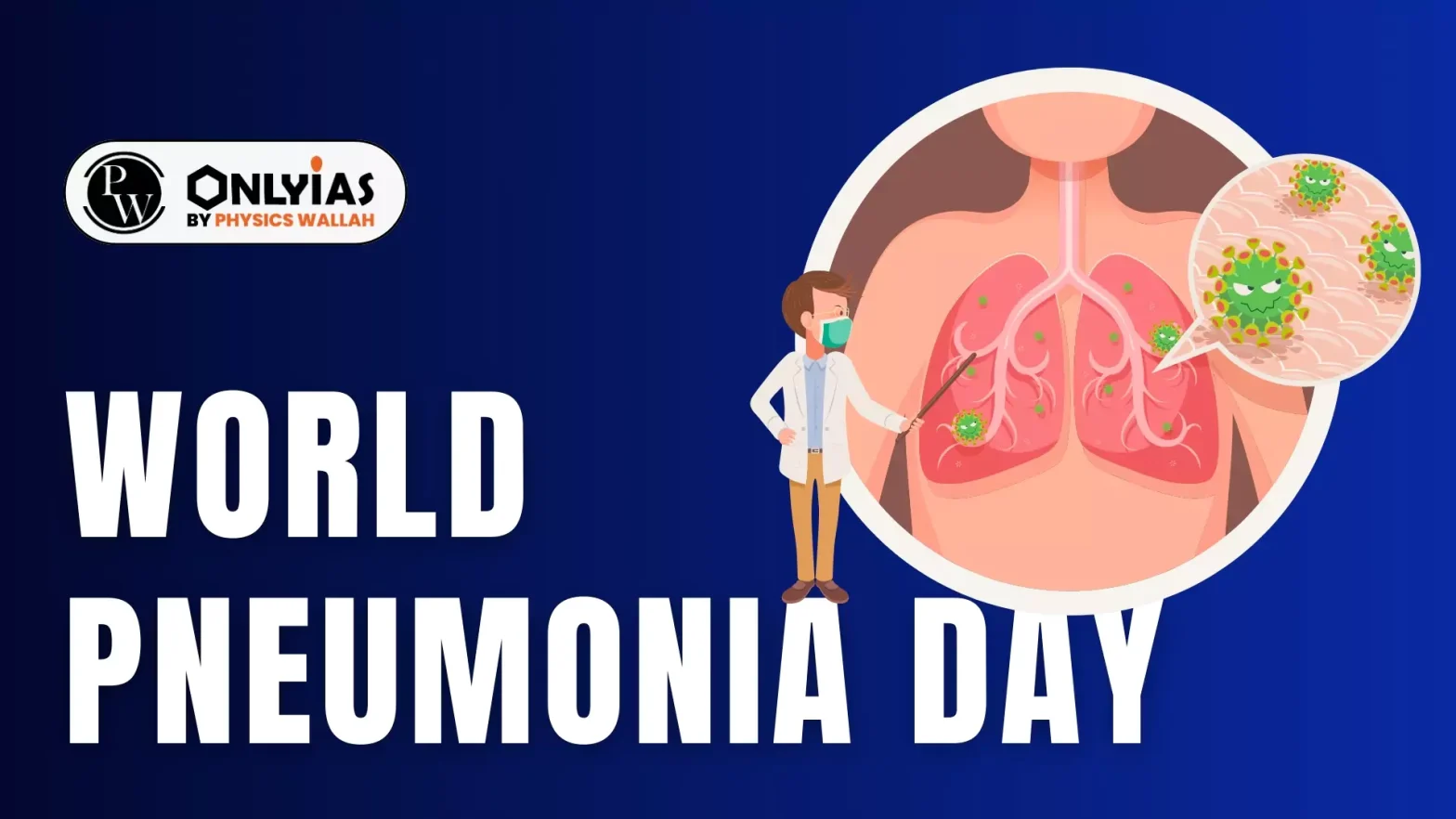World Pneumonia Day is observed annually on 12 November to raise awareness about this deadly illness and advocate for global action to combat it.

World Pneumonia Day is observed on November 12th each year to raise global awareness about pneumonia, a disease responsible for a significant number of deaths worldwide, particularly among children under five and older adults. This day aims to mobilize resources, encourage preventive measures, and highlight the need for urgent interventions to reduce pneumonia-related fatalities. In 2024, World Pneumonia Day emphasizes collaborative efforts to reduce pneumonia incidence through improved healthcare, vaccination, and early intervention strategies.
World Pneumonia Day 2024 is set to be celebrated on November 12 to raise awareness about pneumonia, promote its prevention and treatment, and highlight the ongoing fight against this significant global health issue. The day serves to inform communities about the causes, symptoms, and risk factors associated with pneumonia, emphasizing the need for vaccinations, hygiene practices, and access to healthcare. Here’s a brief table highlighting key facts about pneumonia and World Pneumonia Day:
| Fact | Details |
| Date | November 12 |
| Purpose | Raise awareness, promote prevention and treatment |
| Theme | “Championing the fight to stop pneumonia” |
| Global Impact | Pneumonia is a leading cause of morbidity and mortality worldwide, especially in children. |
| Risk Factors | Low birth weight, under-nutrition, indoor air pollution, overcrowding, and lack of vaccination. |
| Prevention Strategies | Vaccination, improved hygiene, and community education. |
| Significance | Highlights the need for international collaboration to combat pneumonia and improve health outcomes |
In 2024, the theme is “Championing the fight to stop pneumonia,” focusing on collaborative efforts to reduce the burden of this disease. Education plays a crucial role in these efforts, as it helps bridge knowledge gaps and encourages proactive health-seeking behavior
Pneumonia is a lung infection caused by bacteria, viruses, or fungi that inflames the air sacs (alveoli) in one or both lungs. These air sacs may fill with fluid or pus, leading to symptoms such as cough, fever, chills, and difficulty breathing. Pneumonia can range from mild to severe and is life-threatening, especially for vulnerable populations such as infants, elderly people, and those with weakened immune systems.
| Key Facts about Pneumonia | |
| Fact | Details |
| Leading Cause of Death | Pneumonia is one of the top causes of death among young children and older adults. |
| Preventable and Treatable | Vaccines and timely treatment can prevent most cases of pneumonia. |
| Global Health Burden | Each year, millions are affected worldwide, with developing countries bearing the brunt. |
| High Risk Groups | Children, the elderly, and immunocompromised individuals are at high risk. |
Pneumonia is primarily caused by bacterial, viral, or fungal infections, which are detailed below:
Pneumonia can be classified based on the origin of infection and the type of causative organism:
| Type of Pneumonia | Description |
| Community-Acquired Pneumonia (CAP) | Occurs outside of healthcare settings, often caused by bacteria, viruses, fungi, or Protozoa from the community. |
| Hospital-Acquired Pneumonia (HAP) | Acquired in a hospital setting, typically more resistant to antibiotics and more severe. |
| Ventilator-Associated Pneumonia | Develops in people using ventilators, usually a serious form as it affects critically ill patients. |
| Aspiration Pneumonia | Caused by inhalation of food, liquid, or other substances into the lungs, leading to infection. |
Symptoms of pneumonia can vary from mild to severe, depending on the cause, age, and general health of the affected person. Common symptoms include:
Pneumonia remains a significant public health issue in India, particularly affecting children and the elderly. Pneumonia is a critical health issue in India, particularly among children under five.
In 2000, the incidence was 657 cases per 1,000 children, decreasing to 403 cases per 1,000 by 2015. The national case fatality rate was estimated at 0.38% in 2015, highlighting the need for effective intervention.
India accounts for about 23% of the global pneumonia burden in young children, making it a key area of concern.
Major risk factors include low birth weight, under-nutrition, indoor air pollution, overcrowding, and lack of measles immunization. Several risk factors contribute to the prevalence of pneumonia in India, including:
Uttar Pradesh, Bihar, Madhya Pradesh, and Rajasthan have the highest rates of pneumonia cases.
To mitigate the impact of pneumonia in India, several strategies can be implemented:
India’s government, along with global health organizations, has launched initiatives to increase vaccination coverage and improve healthcare access, especially in remote regions.
Pneumonia is preventable, and several measures can reduce the risk:
Ready to boost your UPSC 2025 preparation? Join PW’s UPSC online courses today!
UPSC Exam 2025 Related Articles
UPSC Prelims 2025 Exam
UPSC Notification 2025
UPSC Preparation 2025
UPSC Eligibility 2025
UPSC Exam Pattern
UPSC Syllabus
World Pneumonia Day is celebrated annually on November 12.
Pneumonia is primarily caused by bacterial, viral, or fungal infections in the lungs.
Pneumonia is diagnosed through chest X-rays, blood tests, and physical exams to check for infection signs.
Yes, vaccines such as the pneumococcal vaccine and the influenza vaccine help prevent pneumonia.
High-risk groups include children under five, elderly adults, and people with weakened immune systems.

<div class="new-fform">
</div>